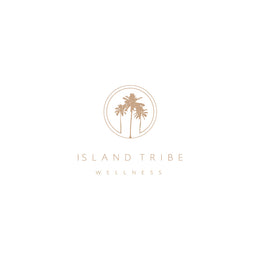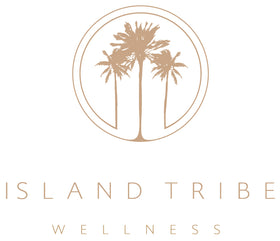By Island Tribe Wellness
Breathwork: How to Harness the Healing Power of the Breath
Breathwork is a transcendent experience, reconnecting us to our power in the present, reframing our perspective, and elevating our consciousness. Just like wanderlust and desert dust, the power of the breath carries us to a different state of being.
Breathwork Approaches
There are many approaches to healing through breathwork. Popular approaches include:
Biodynamic Breathwork. The technique incorporates sound healing and movement informed by deep breathing and is commonly used for trauma recovery.
Clarity Breathwork. Also known as Rebirthing Breathwork, it is founded on the principle that people do not breathe at their full capacity and that fully breathing promotes energetic and emotional healing.
Holotropic Breathwork. The technique incorporates rapid breaths for minutes to hours at a time, fostering an altered state of consciousness. It is said to facilitate emotional release and personal growth.
Shamanic Breathwork. The technique incorporates circular, connected breathing that brings body, mind, heart, and spirit into alignment and balance. It often allows the participants to transcend the ego-self or the rational mind.
There is also Integrative, Transformational, and Vivant Breathwork, among others. Some Breathwork practitioners draw from multiple approaches. No school of thought is better than the other; there is life in every breath!
Breathwork Exercises
Keep in mind that breathwork approaches are different from breathing exercises. Breathwork approaches are healing modalities that see the breath as a tool of self-discovery, awareness, higher consciousness, emotional release, and personal growth. Whereas breathing exercises can be used solely to learn breath control and effective, healthy breathing.
However, different approaches build on breathing techniques to achieve mental, emotional, and spiritual healing. Continuous or circular breathing is a popular foundational exercise. This breathing technique requires a seamless flow of breath, where there is no pausing at any point in the breath cycle.
Other examples of breathing exercises include
4-7-8 Breathing. Inhaling for a count of 4, holding for 7, and exhaling for 8.
Alternate Nostril Breathing. Inhaling through one nostril while keeping the other closed, then alternating nostrils for the exhale.
Box Breathing. Exhaling, holding the breath, inhaling, and pausing again, all for a count of 4 (4-4-4-4).
Pursed Lip Breathing. Inhaling through the nose with the mouth closed for t counts, then exhaling through pursed lips for a count of 4.
How Can Breathwork Benefit You?
As you see, breathwork is a broad term that can describe many techniques and healing modalities. What they all have in common is the use of the breath as an anchor to be more fully present while bypassing the ego, rational mind, and emotional blockages, resulting in meaningful, profound, lasting change and healing.
Physiologically, this is done by activating the parasympathetic nervous system, slowing the heart rate, lowering blood pressure and stress hormones, and creating a state of relaxation. Thereby contributing to the vast physical, mental, emotional, and spiritual healing applications breathwork has. Among them
Physical
- Support Immune System
- Improve Sleep
- Boost Energy
Mental
- Enhance Creativity
- Strengthen Memory
- Promote Concentration
Emotional
- Ease Anxiety & Depression
- Increase Self-worth
- Release Trauma
Spiritual
- Connect with Higher Self
- Receive Unconditional Universal Love
- Reach Spiritual Awakening
How Is Breathwork Different from Meditation or Yoga?
One fundamental difference is that the ancient practice of breathwork is these healing modalities. It all begins with the breath! Breathwork is an excellent tool for discovering or deepening other practices like mindfulness, meditation, yoga, and Reiki.
Another significant distinction is that breathwork teaches techniques for controlling and altering the breath. Whereas meditation and yoga require focusing on the breath without necessarily manipulating it. Once you understand how to harness the healing power of the breath, you can take it wherever you go, during your commute, on sunrise hikes through the desert, or in your bed before you rise in the morning or drift off at night.
Final Thoughts
In the same way we should regularly seek natural respite, such as the desert, in lieu of the city's turmoil or the congestion of the suburbs, breathwork creates an inner oasis for solace and renewal.
There is a powerful distinction between taking a deep breath amidst the busyness of life and the breath you take while enveloped in the healing vortex of the desert. The difference is similar between breathing and breathwork. Breathing may be the greatest pleasure in life, but breathwork is the greatest medicine.

